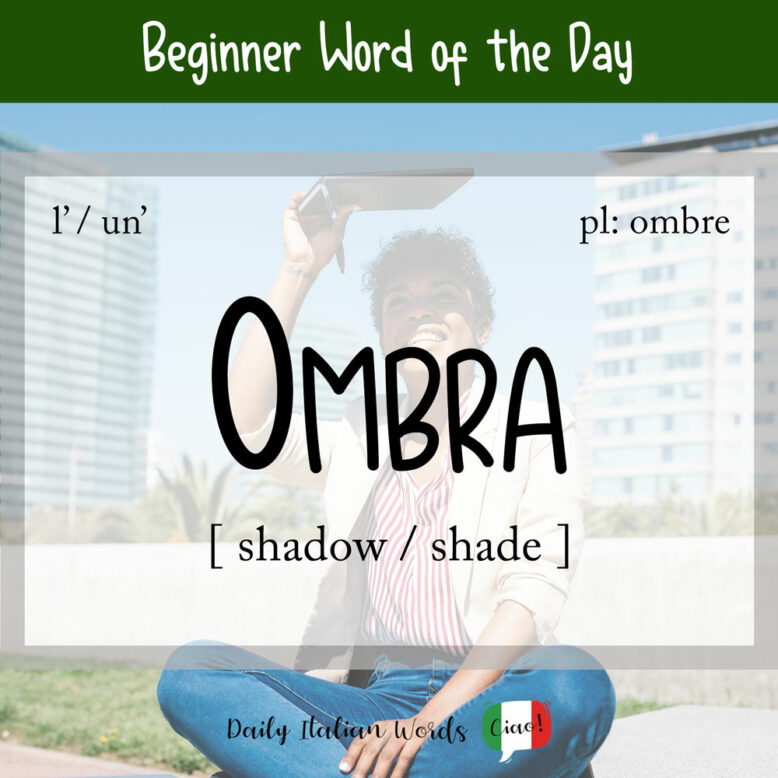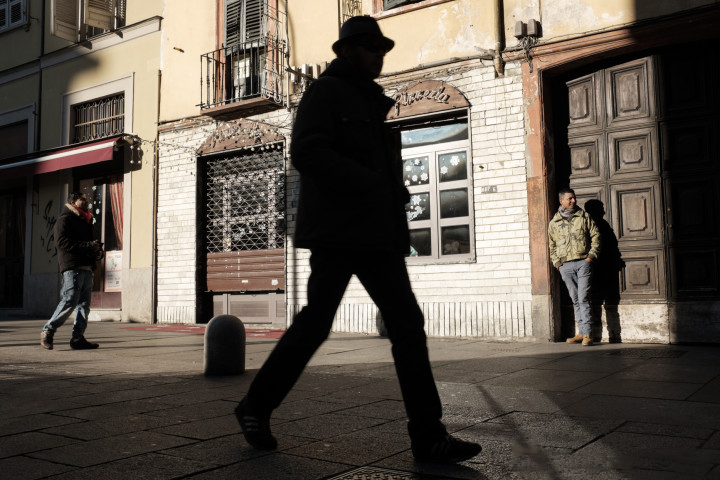Ombra (feminine, plural: ombre) is the word for both shadow (the dark shape cast behind an illuminated body) and shade (the darkness created by direct shelter from sunlight). In Italian, there is no real distinction between these two concepts.

L’albero proiettava un’ombra sul marciapiede.
The tree cast a shadow on the footpath.
Mi sono seduto all’ombra per scappare dal sole rovente.
I sat in the shade to escape from the scorching sun.
Besides shadow and shade, there are numerous additional figurative meanings in Italian for ombra, including spirit/ghost, a small quantity, protection and trace/sign. The examples below should give you a good idea of just how multifaceted this word is!
- le ombre dei trapassati = the spirits of the dead
- un’ombra di sale = a small amount of salt
- vivere all’ombra di suo padre = to live under the protection of his father
- non c’è ombra del ragazzo = there isn’t a trace of him
Ombra is also used to refer to something that raises suspicion or breeds mistrust between people.
- fare/dare ombra a qualcuno = to cast suspicion on someone
- dissipare le ombre = to clear up an ambiguous situation
- prendere ombra (di qualcosa) = to cast suspicion upon oneself
Within the context of art, photography and design, it is also the word for the dark areas of a painting that contrast with the lighter areas.

Expressions featuring the word ‘ombra’
Lasciare in ombra (qualcosa)
Literal translation: to leave (something) in shadow
English meaning: to skirt around, avoid (an issue)
Essere messo in ombra
Literal translation: to be put in the shadows
English meaning: to be overshadowed
Senza ombra di dubbio
Literal translation: without shadow of doubt
English meaning: without a shadow of a doubt
Heather Broster is a graduate with honours in linguistics from the University of Western Ontario. She is an aspiring polyglot, proficient in English and Italian, as well as Japanese, Welsh, and French to varying degrees of fluency. Originally from Toronto, Heather has resided in various countries, notably Italy for a period of six years. Her primary focus lies in the fields of language acquisition, education, and bilingual instruction.


